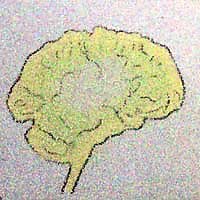
Empowering ADHD/NT couples with self-determination theory (SDT)
4 March 2025
Below is a blog of mine that was published in 2024 on the Attention Allies blog website. In it, I offer some introductory insight to how Self Determination Theory (SDT) can be a strong, flexible and empowering framework to help support those living in mixed ADHD/neurotypical relationships.
Couples therapy involving one partner who has an ADHD neurotype requires a compassionate and structured approach to foster success. Traditional therapy models often unintentionally frame the work as an ADHD partner needing to be “fixed” or that they must be taught or learn “how to conform” to a neurotypical concept of relationships. This framing tends to alienate ADHDers and can exacerbate relational tensions rather than help to address them.
Many couples who seek help at my practice report that previous therapists had struggled to balance the needs of both partners, often overlooking or underestimating the distinct challenges and strengths associated with ADHD. Without proper recognition of these issues, therapy risks becoming another source of frustration for the mixed-neurotype couple, leaving them feeling unseen and unsupported.
From my 25 years of professional experience and 37 years in a successful, loving mixed-neurotype marriage, I’ve found that the core principles of Self-Determination Theory (SDT) – autonomy, competence and relatedness – provide a robust framework for fostering resilience, empathy and growth in couples therapy. These principles allow partners to navigate conflicts constructively and create a supportive, thriving relationship.
For individuals with ADHD, the often-reported challenges such as disorganisation, impulsivity and difficulties with emotional regulation can strain communication and mutual understanding in romantic relationships. If not addressed, these issues may lead to misaligned expectations, frustration and feelings of disconnect.
Introducing the SDT framework for couples work
SDT was developed by psychologists Edward Deci and Richard Ryan and was first comprehensively outlined in their 1985 book Intrinsic Motivation and Self-Determination in Human Behavior. Focused on understanding the factors that enhance or undermine motivation, SDT identifies three essential psychological needs:
Autonomy – the need to feel self-directed and in control of your own actions
Competence – the need to feel effective and capable
Relatedness – the need to feel connected, valued and have a sense of belonging.
An SDT-based approach to couples work will help both partners identify and meet their psychological needs while simultaneously promoting mutual respect and empathy within the couple. By empowering an ADHD partner to develop tailored strategies for managing their challenges, therapy can increase autonomy. The building of confidence through therapeutic work helps to develop abilities (competence), and enhancing emotional connection and understanding in couples work increases relatedness.
Therapy can transform recurring conflicts into opportunities for deeper connection and shared growth. This approach acknowledges the ADHD dynamics in the relationship – creating a pathway to sustainable harmony and partnership.
Beginning to apply SDT in ADHD/NT couples work
ADHDers often experience unique challenges in romantic relationships, and the common issues ADHD can bring often strain the communication systems and understanding of a couple. Using SDT in couples work provides a structured framework for addressing the issues and challenges that are especially prevalent in mixed-neurotype relationships.
When I first met Jess (diagnosed with ADHD) and Mo (neurotypical), their relationship was mired in daily conflict and palpable frustration. Sessions often began with a seemingly minor disagreement that quickly escalated. On one occasion, Mo was deeply frustrated because Jess had once again missed a deadline for paying a household bill. Despite repeated “requests” to “do it right next time,” Mo felt nothing ever changed, leaving her to shoulder most of the family responsibilities.
What I observed was a deeper pattern: Mo’s attempts to manage Jess’s behaviour were experienced by Jess as micromanagement, which undermined her competence (confidence in her ability to handle responsibilities) and autonomy (freedom to self-direct). For Jess, this dynamic triggered overwhelm and defensiveness.
The core issue lay in miscommunication of their individual needs and understanding of the other. As a neurotypical individual, Mo prioritised structure and predictability. Meanwhile, Jess’s ADHD presented challenges with timing and task prioritisation. These differing approaches turned relatively small issues into significant conflicts.
SDT strategies in action for Mo and Jess
Autonomy: Jess was encouraged to handle tasks in a way that worked for her. Mo’s request was for Jess to simply set up an automated payment, but this triggered Jess’s childhood memories of being seen as incompetent. Instead, Jess set about designing a visual task board that included a wider set of financial goals and accounts. With the use of colour and an impressively artistic hand-drawn financial flow chart, Jess successfully navigated the challenge and was able to stick to, and increase, her financial responsibilities for the family.
Competence: Therapy focused on building Jess’s skills without criticism, which helped her to feel more effective in managing responsibilities. Mo’s competence increased once she realised it wasn’t her responsibility to do things it had been mutually agreed Jess would do. Mo took pride in her new skill of “sitting back”.
Relatedness: Mo learned to express concerns empathetically, removing frustrated responses and replacing them with expressive dialogue like “I feel anxious when bills are late”. Jess was encouraged to share how constant reminders and micromanagement felt overwhelming, fostering mutual understanding.
By applying SDT models, the conflict between Jess and Mo began to reduce. This allowed them to build further trust in one another, transforming challenges into opportunities for growth.
This article provides an introduction to how SDT can begin to reshape ingrained patterns in mixed ADHD/NT relationships. Visit us again for future articles on applying SDT in therapy.
You might also like to view Can autonomy, competence and relatedness be the adhders’ defence against Rejection Sensitive Dysphoria where you can read more about basic SDT in connection with ADHD.
Note: Jess and Mo are composite characters, inspired by a mix of consensually shared and fictionalised examples.
References
Deci, Edward L. and Richard M. Ryan. 1985. Intrinsic Motivation and Self-Determination in Human Behavior.
Originally published on 8 December 2024
All rights reserved © Copyright Duncan E. Stafford 2024. Unauthorised use and/or duplication of this material without express and written permission from the author of this post is strictly prohibited. Author contact via website Contact page.
Below you can find a selection of my blog posts that you might find interesting. You can find the full set of posts at therapy place blog

Where we live: family, home and not making assumptions
30 Nov 2016
The situation in which people live is a common subject that comes up in therapy. There are students new... Read more at therapy place blog

The mood forecast for the autumn
26 October 2016
As the temperature and light levels drop at this time of year, so each day rapidly shortens. Falling leaves unequivocally announce autumn and the inescapable ‘decline’ towards winter... Read more at therapy place blog

Effective solutions for failing relationships
27 September 2016
It is never comfortable to feel that one is failing at something in life. When it comes to a relationship failing, we can all bring out pretty special defence systems that keep us away from this recognition... Read more at therapy place blog

A stitch in time …
29 March 2016
In total, with two different therapists I spent 8-and-a-half-years in therapy. For 5-and-a-half-years I even went twice a week... Read more at therapy place blog

When someone strays
29 February 2016
Most people – whether through experience or empathy – can understand the range of feelings that go through someone’s mind and body when they discover their partner has, or is currently having, an affair... Read more at therapy place blog

Men: porn, relationships and the respectful gaze?
31 October 2015
As part of my wide-ranging work as a therapist, I engage in conversations with men who have issues with pornography and sexual addictions... Read more at therapy place blog

When the sex goes bad, make the talking good
1 July 2015
Sadly, lots of people don’t feel very satisfied with what happens in their sex lives, and there are many reasons why it can go wrong... Read more at therapy place blog

Cheaper than a divorce
1 May 2015
Some of the ills of today’s multi-media, socially networked life are that expectations of things can be unrealistically high. From rom-coms to choosing... Read more at therapy place blog
